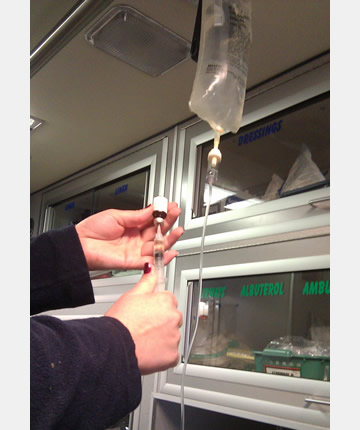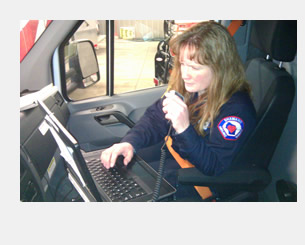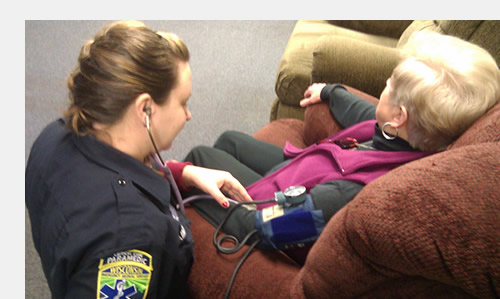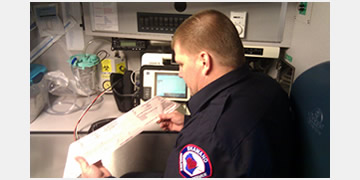| |
Fast forward to 1985, when the State of Wisconsin recognized the need for advanced levels of care in areas other than metropolitan centers. Since the gravity of paramedic level of care necessitated full time personnel, it was more-or-less only available in big cities. The State created a hybrid curriculum called the Emergency Medical Technician – Intermediate that introduced advanced skills which could be performed by personnel that were still predominantly volunteer or part time. Shawano Ambulance Service was a test site for that program, successfully piloting it for the State. For the next thirteen years, it was the standard many rural areas strived to attain. During 1997-1998, SAS was a test site for yet another Wisconsin pilot program gleaning frequently used skills and medications from the paramedic program and delivering them to the newly created EMT-Enhanced program.
In January of 2003, SAS upgraded to the paramedic level. Special exceptions to the standard scope of practice took over a year to get State approval and were written into the original protocols to allow SAS paramedics to perform additional skills. By 2005, the number of special exceptions had grown, and all paramedics completed the Critical Care Transport training curriculum to give them the knowledge and tools to manage very acutely ill or critically injured patients for extended periods of time. |
 |
 |
 |
Today, Shawano Ambulance Service is the only 911 ambulance service in the State of Wisconsin that requires all of its paramedics to be full time employees and maintain Critical Care credentials. “The responsibility of the critical care paramedic role is tremendous. We want our personnel to have the knowledge and experience to care for our patients in the best way possible. It is no secret that when you do something as a career instead of a part time hobby, you are much better at it,” commented Pat Trinko, Director of Operations at SAS. Ambulances in larger cities like Green Bay, Appleton, Wausau and even Milwaukee do not staff their 911 response units with Critical Care Paramedics as SAS does.
|
| Shawano Ambulance Service maintains five ambulances in its station located on Main Street. The station is staffed with either three or four crews, twenty four hours a day, seven days a week, 365 days per year. Trinko commented “When things get busy, off duty personnel are called in to provide additional coverage.” Our primary response areas include nine townships, three villages (Bonduel, Cecil, and Gresham) and the City of Shawano. We also perform paramedic intercepts for outlying ambulances and inter-hospital transports throughout the state.” |
 |
 |
 |
 |
|
| After several years of reviewing data from interfacility transfers and working closely with Shawano Medical Center to streamline the transfer of care, Shawano Ambulance has developed an extremely effective transfer process for STEMI and Code Stroke patients. Patients can be delivered to the cardiac catherization lab at Appleton Medical Center less than 50 minutes from the time a STEMI or Code Stroke is |
discovered in the Shawano Medical Center-ED. “We aren’t just driving faster… in fact, we closely monitor our transport times to be sure this is not the case. We have worked with all the disciplines involved to make the transfer of care as efficient as possible. Our critical care paramedics are able to provide all the protocol items and procedures en route rather than waiting on scene for ED personnel to do so. We found huge time savings in making this possible.”
Additionally, SAS provides free CPR training to the public at NWTC in Shawano several times a year. SafeKids® child protective seat inspection events with certified inspectors are performed several times annually throughout the area.Finally, SAS is currently involved in a Community Paramedic pilot program being developed jointly by the University of Wisconsin and Northeast Wisconsin Technical College slated for trial in the Shawano area over the next two years. |
 |
 |
 |
|
|





